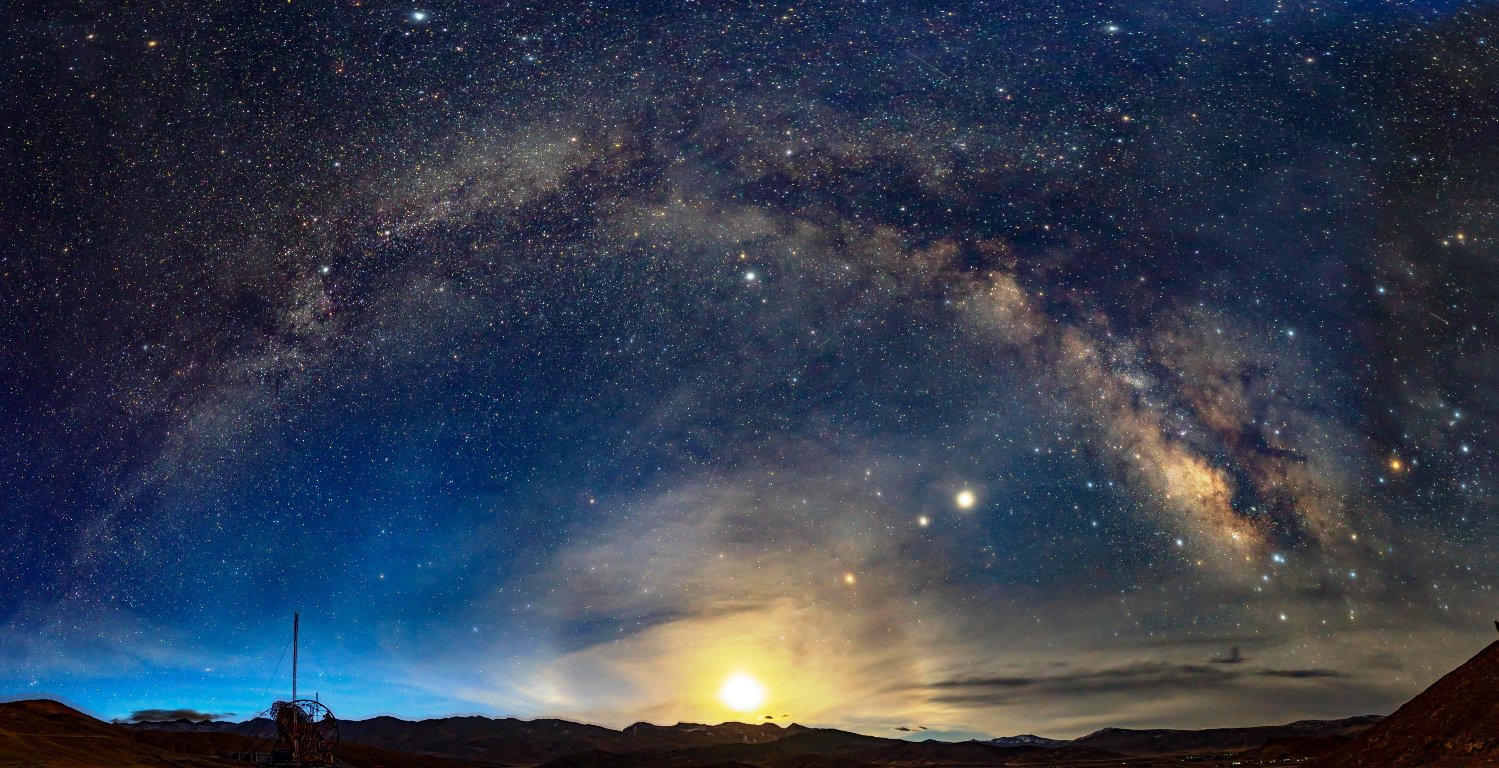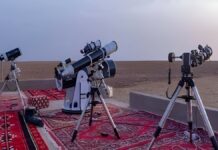by Qudsia Gani
The universe has many more secrets and surprises to offer. We only need to be curious.

The human brain is the product of blind and unguided evolution. Nothing in our cognitive make-up could have prepared us for relativity, helio-centrism or the horribly true predictions of quantum mechanics according to which particles can be in two places at once, or randomly pop out of empty space.
While this is extremely hard to make sense of it, the quantum theory does lead to incredibly accurate predictions confirmed by several experimental tests. Therefore, let not struggles with mathematics at school worry us at all. Who knows it may result in a very good long term union. We only need to be consistently at it.

A Slow Learner
Sir Roger Penrose, who on Tuesday won the Nobel Prize for Physics, would also scratch his head in class. “I was always very slow. I was good at maths, but I didn’t necessarily do very well in my tests,” the Colchester-born (1931) laureate recalled. “But the teacher realised if he gave me enough time, I would do well. I basically had to do everything by working it out from first principles.”
Who Are The 11 Nobel Prize 2020 Laureates And What They Have Done?
Whoever that teacher was and remembering the fact that those were the years of Second World War, we have reasons to thank him for his patience with the young pupil.
Sir Roger went on to become a star mathematician, first at University College London and then at Cambridge University, where he pursued his PhD. He has an academic background in mathematics, and he never took a formal course in Physics. But he devoted himself to learn physics on his own and through discussions with astrophysicist Dennis Sciama, the PhD supervisor of Stephen Hawking.
Black Holes
Black holes are a direct inference from the general theory of relativity. However, not even Einstein, the proponent of this theory did actually believe in their existence. Ten years after his death, this British theorist expanded the methods used to study the theory of relativity while introducing new mathematical concepts. Penrose’s ground-breaking article was published in January 1965 and is still regarded as the most important contribution to the general theory of relativity since Einstein.
Albert Einstein had described how everything and everyone in the universe was held in the grip of gravitation. Gravity holds us on Earth, governs the orbits of the planets around the Sun and that of Sun around the centre of the Milky Way. It leads to the birth of stars from interstellar clouds, and eventually their death in a gravitational collapse. Gravitation gives shape to space and influences the passage of time. Above all, it results in forming a black hole, one of the most exotic objects in the universe.

Despite the extremely complicated mathematics involved, the German astrophysicist Karl Schwarzschild was able to provide Einstein with a solution that described how heavy masses like black holes can bend space and time. However, in the infinitely strong gravity at the centre of a black hole called as ‘singularity’, the theory of general relativity ceases to work well.
Therefore intensive research was carried out to create a new theory of quantum gravity. This must unite the two pillars of physics, the theory of relativity and quantum mechanics, which meet in the extreme interior of black holes. The work of Penrose is like that Holy Grail of physics which unifies the laws of very large things under the ambit of general relativity and those of very small, governed by quantum mechanics.
Two Giants
Penrose and Hawking worked on parallel tracks for 15 years before they were awarded the prestigious Wolf Prize for singularity theorems in 1988. While as Hawking chose a closed (collapsing) universe, Roger Penrose preferred an open (expanding) universe, as he found it more interesting from a geometrical perspective.
His study was further spearheaded by the pioneering work of Reinhard Genzel and Andrea Ghez. The former is a German astrophysicist, co-director of the Max Planck Institute for Extraterrestrial Physics and an emeritus professor at the University of California. The latter is an American astronomer and professor in the Department of Physics and Astronomy at the University of California, Los Angeles. She is also now the fourth woman to win the Nobel Prize in Physics among a total of 200 laureates since 1901.
Why 4 Nobel Prizes Suggest Women Empowerment Benefits Humanity Better?
Ghez And Genzel
While Penrose laid the theoretical foundations for the existence of black holes, Ghez and Genzel’s teams produced powerful experimental evidence that such voids do sit at the heart of galaxies. Genzel and Ghez looked at the dust-covered centre of our Milky Way where something strange was going on. Several stars were moving around something they couldn’t see. It was not just an ordinary black hole, but a supermassive black hole about four million times the mass of our sun.
Since the 1990s, Ghez and Genzel have led the groups that mapped the orbits of stars close to the Galactic Centre. These studies led them to conclude that an extremely massive, invisible object must be dictating the frantic movements of the stars. The object known as Sagittarius A* is so far the most convincing evidence of a supermassive black hole at the centre of the Milky Way.
This has led the way for new generations of precise tests of the general theory of relativity and its most bizarre predictions. The universe has many more secrets and surprises to offer. We only need to be curious. That is why the first and the only Facebook post of Hawking read, “Be curious, I know I am.”
(Author teaches Physics at the Government Degree College for Women, M A Road, Srinagar. The opinions expressed in this article are those of the author’s and do not purport to reflect the opinions or views of Kashmir Life.)















